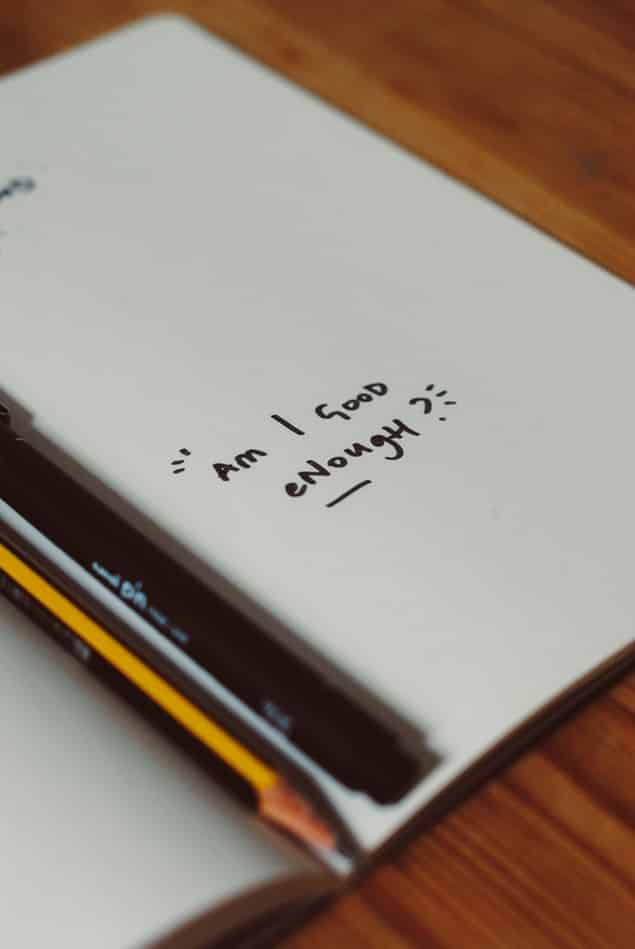It’s 2023, but your cover letter still works like a firm handshake. It creates a critical first impression, so the focus should be on keeping it sharp and concise.
Simple enough?
While you’re looking for new architectural opportunities, you’re also spending hours tweaking that resume. But, the game changer can be a well-drafted cover letter. You can say that most employers don’t read your cover letters. However, more than half of them do expect to receive one.
Your cover letter is like the spare tire; you don’t know when it comes of great use. Strange, right?
But, if you’re serious about landing a job, whether it’s an internship, full-time or part-time your resume is not enough. So, yes, you should write a cover letter to give more weight to your application. No worries, though.
We’ve got you covered in the following guide that answers all your questions. And, it’s going to help you to write that perfect architecture cover letter.
So, keep on reading!

Purpose of a Cover Letter
- It conveys to the employer why they should hire you.
- It highlights your significant accomplishments and critical skills. You should elaborate on the roles that you have played in other firms. This helps to draw employers’ attention to your unique experiences.
- You should express your passion for architecture and the role that you’re applying for. This helps to show that you’re serious about getting the opportunity.
- It sets the ground for the follow-up process. If you mention the date and time when you’ll be calling them for the follow-up, then it safely eliminates the waiting game. You can throw the ball in their court, and at the same time look out for other job openings.
- The cover letter makes up for a poor-quality resume. If you don’t sound confident enough in the resume, then ensure to demonstrate your personality through a persuasive cover letter.
- It showcases your communication skills (writing ability), as the resume comes with a strict formula of short, choppy statements and bullet points. So, use the cover letter to put the right foot forward.
Common Mistakes While Writing a Cover Letter
- Don’t beat around the bush, instead be straightforward while describing your experiences.
- Avoid using emoticons, and words like “WOW,” “LOL,” and “OMG.” It’s a cover letter for a job and not a text message.
- Don’t focus too much on yourself and your achievements. The employer is looking for someone who can get the work done. So, focus on things that you believe they want to know about an employee applying for that particular role.
- You are overusing the word “I” at the beginning of every sentence. This makes the cover letter look more like an autobiography.
- Avoid sharing every tiny detail about your past projects and experiences. A brief explanation will get the work done!
- Avoid giving details that become a red flag. You shouldn’t focus on your weakness or your bad experience in the previous job. Let the cover letter speak about your present scenario rather than highlighting the past.
- Avoid using unnecessary words or confusing and complicated sentences. Keep it concise and straightforward for easy interpretation.
- Don’t stretch the cover letter too long. You can keep it either half-page or full-page long.
- Avoid writing the same information that has already been mentioned in your resume.
- Do not use a non-professional email address, for example, [email protected]
- Don’t forget to sign the cover letter. You should follow this business etiquette, as it shows your attention to detail.
- Avoid making the cover letter sound too generic. You should customize it to suit the organization that you’re applying to.
- Do not end the cover letter on a passive note. Instead of depending on them to call you back, you should give a follow-up. For instance; I will follow up by the 19th of June, to answer any further questions, and in the meantime, you can get me at (+033) 333-3333.
- Avoid making any spelling mistakes. Proofread your cover letter at least twice before you forward the piece.

Tips for Writing the Cover Letter
1. Keep it short
Take just the right amount of space to specify the things that you can offer to the organization. Avoid going overboard with superfluous words and too much information. To demonstrate your ability to communicate effectively, you should focus on writing a compelling and concise cover letter. Don’t go beyond a page, and stick to a maximum of four to five paragraphs.
2. Start with a strong message
In the first few sentences, you should mention the position you’re applying for and why you’re a strong candidate for that role. Highlight your experience and quality, which makes you an ideal competitor for the position.
However, those of you without relevant prior work experience can focus on briefly describing your extracurricular activities and coursework. Overall, the employer should understand that you’ve got the right foundation to establish your career in their firm.
3. Why do you want a specific job?
Your cover letter should target the job at hand. Try to read through the job description carefully, and the skills required for that role. Focus on adding keywords that have been mentioned in the job description (e.g., degree required, years of experience, specific software skills, etc.).
To further personalize your cover letter, you can demonstrate your familiarity with the job role, specific industry, and employer. Remember, employers want people who appreciate their work. They hire people who have the potential to grow along with their business and can evolve to be a stronger personality in the firm.
4. You can personally address the hiring manager
Just like how we personalize the resume, the cover letter should also focus on addressing the hiring manager. If you don’t have any information about them, you can contact the company directly to find out.
This shows your effort in learning about the vision, mission, and critical leadership qualities of the organization. You can also mention the name of the person who has referred you to this job.
5. Sell Yourself
The cover letter is your marking document, try keeping it unique. Don’t simply rehash your resume, instead, you should be elaborating on the best parts of it. Try to draw the reader’s attention to your specific skills and experience. And, explain why the job is vital for your career goals. Also, justify the gaps in your resume, if any.

6. Use the correct format
In the design world, your formatting plays an essential role in making the cover letter look professional and smart. Ensure that the format of the cover letter matches your resume. Both of them should complement each other.
7. Focus on your soft skills
Tailor your cover letter in a way that it can’t be ignored. Focus on incorporating your soft skills, such as work ethic, ability to meet deadlines, working overtime (quite common in architecture), effective communication skills, quick learning, teamwork, etc.
8. Proofread thoroughly
Once you’re satisfied with your argument for the desired candidacy, it’s time to proofread your entire piece. You can’t impress a hiring manager when you have grammatical errors and typos in the cover letter.
After you’ve proofread your work a few times, get your friend to read it. You can also give your friend a copy of the job description, so they can ensure you’ve filled all the gaps.
How to structure the architecture cover letter?
A cover letter helps to introduce your resume to the prospective employer. It tells them everything they need to know about a potential candidate and the reason why they’re contacting the firm. Use this forum to explain your situation, but be honest with your descriptions.
Here are the three fundamental parts, which give the basic outline of your cover letter:
1. Introductory paragraph
You must focus on answering the unvoiced questions of the employer, which include- Who are you? Why are you contacting me? Which position are you applying for? Why should I hire you?
Give a slight hint of what you can offer to the firm by briefly mentioning your qualifications, skills, and experience. Your answers should be clear and crisp so that each sentence is simple to grasp.
Ensure that you provide a clear description as to why you’re an ideal candidate for the job role. You can also state how you got to know about the job vacancy. Use action-oriented, positive language, and be smart and confident with your writing style.
2. The body paragraph
State your reasons for wanting to work with this employer and your interest in your chosen career field. Give a summary of your skills and experience and how it applies to the job position.
You should focus on the job description to help you tailor the cover letter correctly. For instance, if the firm is looking for a Rhino 3D expert, you should highlight this skill in your cover letter. Similarly, ensure that you cover all the relevant skills mentioned in the job description.
Avoid repeating what you had initially written in the resume. Instead, try to present a consolidated account of why you’re suitable for the job. To get the attention of the reader, you can add a couple of examples to back up your statements.
Moreover, you can use the cover letter to include the skills and accomplishments that you haven’t mentioned in the resume. Also, you can explain the dodgy parts given in your resumes like the layoffs and gaps. But, add only those points that portray you in a positive light, concerning the job.
3. Closing paragraph
Mention about what you can contribute to the firm. And, don’t emphasize too much what you can get out of this opportunity. The employer wants to hear how you’re going to be beneficial to their business. But, you have to be smart to present your answer in a polished manner.
You can also ask them to go through your resume for additional details. Your last sentence should be quite firm, with a request for positive action. Sound confident and interested. You can request them for a follow-up call and a personal interview.

The different ways to submit a cover letter
You have three modes that you can choose from to submit your cover letter:
- Mailed hard copy
- Email applications
- Website submissions
Mailed hard copy
We generally don’t advise anyone to send their applications through the old mail system. However, if you opt to send a hard copy of your applications, then print the cover letter on quality white bond paper. And, don’t forget to sign it at the end.
Get a waterproof envelope to prevent any damage to your application.
Email applications
If you’re sending an email cover letter, we advise you to follow the instructions given by the employer on how the resume and cover letter should be addressed. Most people, when applying by email, usually opt to include their cover letter directly in the body of the message.
When you type the cover letter in your mail, you don’t have the additional burden of attaching a separate file. You again have options for attaching your cover letter by email. We’ve compiled the three different methods along with their positive and negative aspects.
Let’s take a look at them!
Sending Cover Letter in the Body of Email, Portfolio, and Resume as Attachments
Some employers prefer to go through the cover letter first, before checking out the resume and your portfolio. You should ensure that you convey all the information correctly in your email concerning the job.
First impressions are important, especially when it comes to landing a job. So, draft your email correctly, and ensure to check it a few times before you tap on the ‘send’ button.
What are the benefits?
- It increases the possibility of the cover letter being read by your prospective employer. They can open the mail and find out about you without having to download the attachments separately.
- Gives the package a more exciting look, without having to search for the cover letter in the attachments.
- Your sample portfolio and resume are kept in different attachments, so you don’t need to worry about having the same format for both.
What is the negative aspect?
- When you attach your portfolio and resume as separate attachments, there is a possibility of it not being opened.
Combining Email Cover Letters, Resumes, and Portfolios as One Attachment
If you need to attach a cover letter, resume, and portfolio (as per employer instructions), use Adobe PDF and Microsoft Word files in your email message. Moreover, save the files correctly with your name, to avoid it from getting jumbled up with the documents of other applicants.
What is the positive aspect of it?
- With a single document, the employer can easily keep track of it. However, if you don’t include a convincing body cover, they might not even open the attachments.
What are the drawbacks?
- The formatting for all three documents should be the same.
- If you include your cover letter in the body of the email as well as an attachment, then the PDF is no longer useful.
- When you send the application all-in-one document, it gets easier for the hiring manager to forward or print the pages.
Attaching the Cover Letter, Resume, and Portfolio Separately
If your application can be sent in separate attachments then you don’t need to worry about having the same formatting for each one of them. For instance, you don’t have to change the format from landscape to portrait.
What are the benefits?
- It’s easier for the hiring manager to find the document that they are looking for, without having to skim through all of them.
- Allows you to use a different format for each document.
What is the drawback?
- The additional burden of having to open and close separate files.

Website submissions
Some of the big architect organizations generally have the submission of applications on their website. For submitting your cover letter in this situation, you’re given either of these two options:
- A text-only box
If it’s a plain text box, it won’t allow you to format your document. So, when you’re applying, you should get the cover letter formatted in both plain text and HTML. This helps to ensure that your document is easily readable.
- Attaching your cover letter in pdf file format
We advise you to go for this option if the website has it. However, if it offers a text box for the cover letter, you’ve to face issues with getting the right format.
Your cover letter is not a mere courtesy or formality- it’s an opportunity to create an impression. And, you can land your dream architecture job, by crafting an effective cover letter. Use these tips and tricks to get the best out of your writing. You should put in the required effort to reflect your capabilities uniquely. If you plan to get the shortcut and use a paper writing service, always make sure the tone is your own, that you personalize the draft, and infuse your own personality, by being yourself there’s no way you can go wrong. So, go ahead and grab every opportunity.
We wish you good luck!



